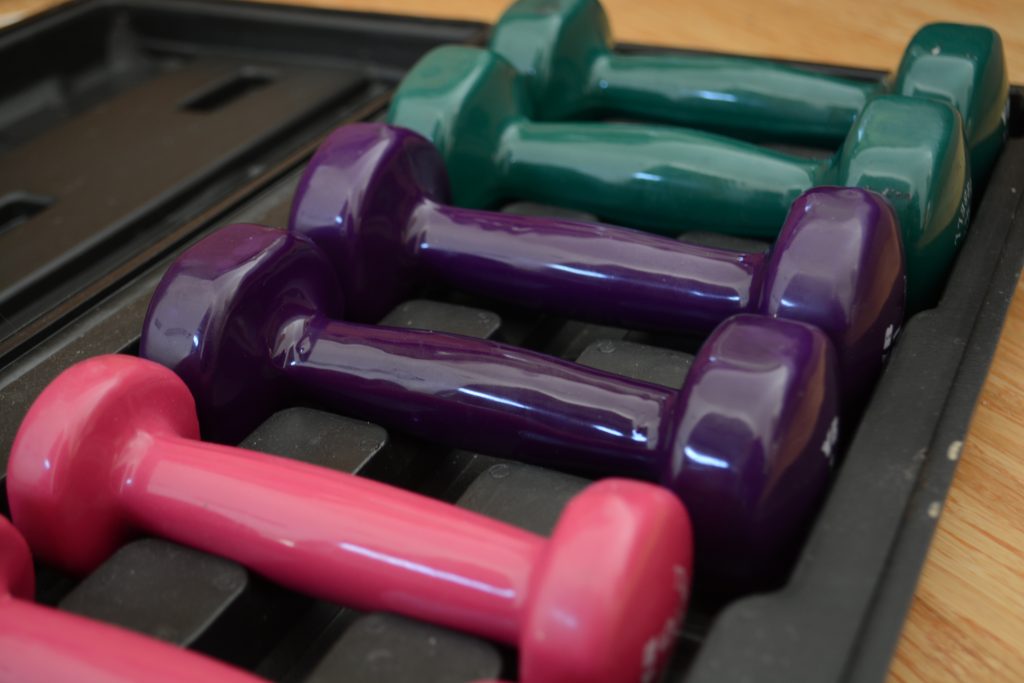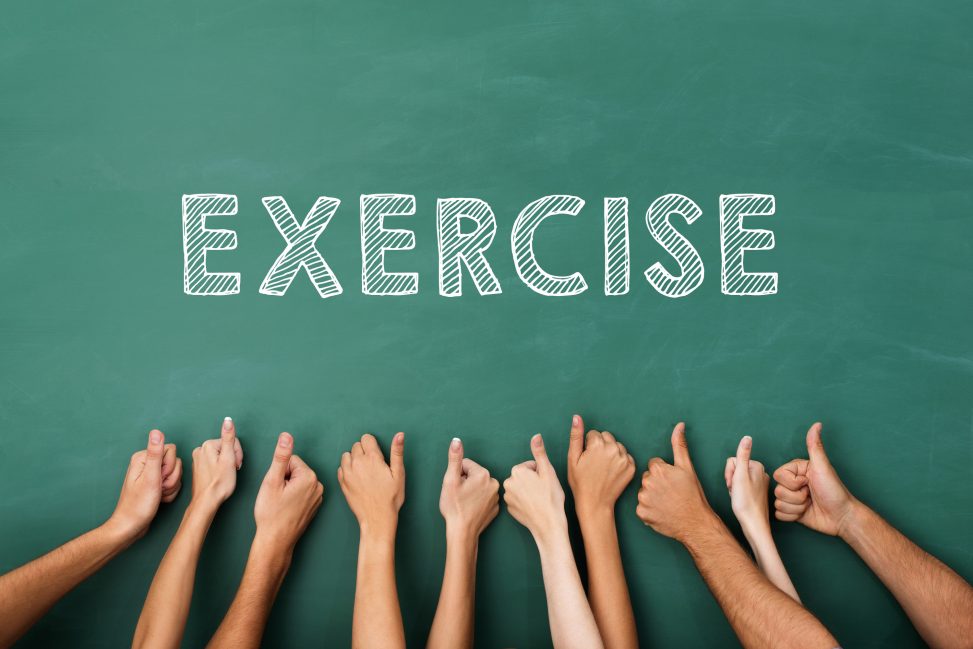We all know that exercise provides many benefits to us, but when we wake up at 5am to go for a run it is definitely harder to remember this. Hopefully, this new study from the American Cancer Society, the National Cancer Institute, and the Harvard T.H. Chan School of Public Health, will convince you that that morning run (or brisk walk) really is worth it. Health experts have known for a long while that exercise is linked with a lower risk of several cancers, but there has been limited evidence about exactly how much exercise is needed and what exactly the benefits are.
Charles Mathew, PhD, and other researchers conducted the most  comprehensive study to date where they examined groups from the US, Europe and Australia, focusing on 15 cancers that had previously found to be associated with physical activity. In total there were 755,459 individuals studied of which 53% were female, who had no history of cancer at the start of follow-up. They analyzed the dose-response relationship between leisure-time physical activity and cancer to provide new insight into the amount of physical activity needed for a reduced risk of many cancer types.
comprehensive study to date where they examined groups from the US, Europe and Australia, focusing on 15 cancers that had previously found to be associated with physical activity. In total there were 755,459 individuals studied of which 53% were female, who had no history of cancer at the start of follow-up. They analyzed the dose-response relationship between leisure-time physical activity and cancer to provide new insight into the amount of physical activity needed for a reduced risk of many cancer types.
In this study of approximately 750,000 adults, engagement in the recommended amounts of leisure-time physical activity (7.5-15 MET hours/week) described by the Physical Activity Guidelines for Americans Advisory Committee, equivalent to 2.5 to 5.0 hours/week of moderate-intensity activity (eg, brisk walking), was associated with significantly lower risk for breast cancer, colon (men only), endometrial, kidney, myeloma, and liver cancer and non-Hodgkin lymphoma (women only).
People who engaged in at least 2.5 to 5.0 hours of moderate-intensity exercise per week had a statistically significant reduction in risk for breast cancer, colon (men only), endometrial, kidney, myeloma, and liver cancer and non-Hodgkin lymphoma (women only).
Interestingly, the strength of associations for recommended amounts of physical activity versus none ranged from a 6% to 10% lower risk for breast cancer to an 18% to 27% lower risk for liver cancer. The reason that exercise had such a great impact on liver cancer as opposed to breast cancer can be explained by the underlying mechanisms driving the formation of liver cancerous cells. For example, exercise exerts a direct effect on glucose, glycogen, and fat metabolism in the liver and may reduce risk of or reverse nonalcoholic fatty liver disease, which is a risk factor for liver cancer. So if there is a history of liver cancer in your family, or in fact any of these aforementioned cancers, then that 5am wake up may just be worth it!
Cancer prevention is an increasingly important field of research as many cancers still do not have an efficient treatment or therapy available. Therefore, it is important to be aware of the ways in which you can reduce your risk of various cancers. You can find more information at https://www.cancer.org/healthy.html.
Charles E. Matthews, Steven C. Moore, Hannah Arem, Michael B. Cook, Britton Trabert, Niclas Håkansson, Susanna C. Larsson, Alicja Wolk, Susan M. Gapstur, Brigid M. Lynch, Roger L. Milne, Neal D. Freedman, Wen-Yi Huang, Amy Berrington de Gonzalez, Cari M. Kitahara, Martha S. Linet, Eric J. Shiroma, Sven Sandin, Alpa V. Patel, and I-Min Lee. Amount and Intensity of Leisure-Time Physical Activity and Lower Cancer Risk. Journal of Clinical Oncology 2020 38:7, 686-697

Alex
"This title was very eye catching! That is so interesting that such a ..."
Alex
"This is really interesting! The fact that crops and plants are damaged is ..."
Alex
"Well done, this article is great and the information is very captivating! Ethics ..."
Alex
"I was intrigued throughout the whole article! This is such an interesting topic, ..."
Alex
"This is such an interesting article, and very relevant!! Great job at explaining ..."
Grandpa
"Honey You Did a good job I will forward to my eye doctor "
murphymv
"This article is fascinating because it delves into the details of the research ..."
murphymv
"I agree, adding the photo helped solidify the main finding. "
murphymv
"This is a fascinating finding. I hope this innovative approach to improving transplants ..."
Sherzilla
"This is a great article! I would really love to hear how exactly ..."
Sherzilla
"It's disappointment that these treatments were not very effective but hopefully other researchers ..."
Sherzilla
"I agree with your idea that we need to shift our focus to ..."
Sherzilla
"It's amazing to see how such an everyday household product such as ..."
Lauren Kageler
"I will be interested to see what the data looks like from the ..."
Lauren Kageler
"A very interesting article that emphasizes one of the many benefits that the ..."
maricha
"Great post! I had known about the plight of Little Browns, but I ..."
Sherzilla
"I assumed cancer patients were more at risk to the virus but I ..."
Sherzilla
"Great article! It sheds light on a topic that everyone is curious about. ..."
maricha
"This article is full of really important and relevant information! I really liked ..."
maricha
"Definitely a very newsworthy article! Nice job explaining the structure of the virus ..."
maricha
"It's interesting to think that humans aren't only species dealing with the global ..."
murphymv
"This is very interesting and well explained. I am not too familiar with ..."
Lauren Kageler
"Great article! This post is sure to be a useful resource for any ..."
Lauren Kageler
"Definitely seems like an odd pairing at first, but any step forward in ..."
murphymv
"What an interesting article! As you say, height and dementia seem unrelated at ..."
murphymv
"Great article! I learned several new methods of wildlife tracking. This seems like ..."
murphymv
"Very interesting topic! You explained cascade testing and its importance very well. I ..."
Alex
"This article is really interesting! What got me hooked right away was the ..."
Sabrina
"I found this article super interesting! It’s crazy how everyday products can cause ..."
Erin Heeschen
"I love the layout of this article; it's very eyecatching! The advancements of prosthetics ..."
murphymv
"Awesome article! I like the personality in the writing. Flash Graphene not only ..."
murphymv
"Very interesting work! I don't know a whole lot about genetics, but this ..."
Cami Meckley
"I think the idea of using virtual reality technology to better help prepare ..."
Erin Heeschen
"I wonder if there's a connection between tourist season and wildfires in the ..."
Ralph berezan
"Not bad Good work "
Michelle
"This sounds like it would be a great tool for medical students! ..."